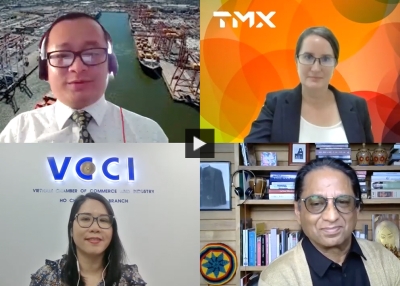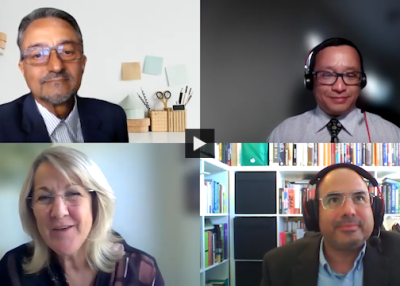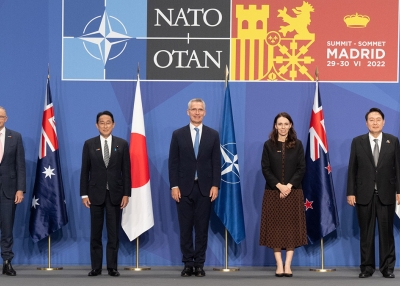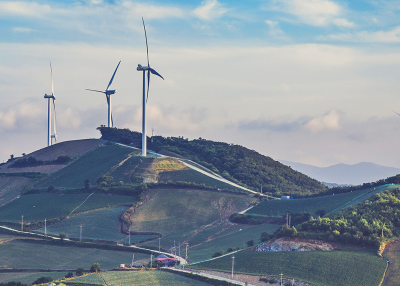Supporting Trade in a New Era of Supply Chain Turbulence
by Vinh Thai, Asia Society Australia Supply Chain Fellow and Associate Professor, RMIT University
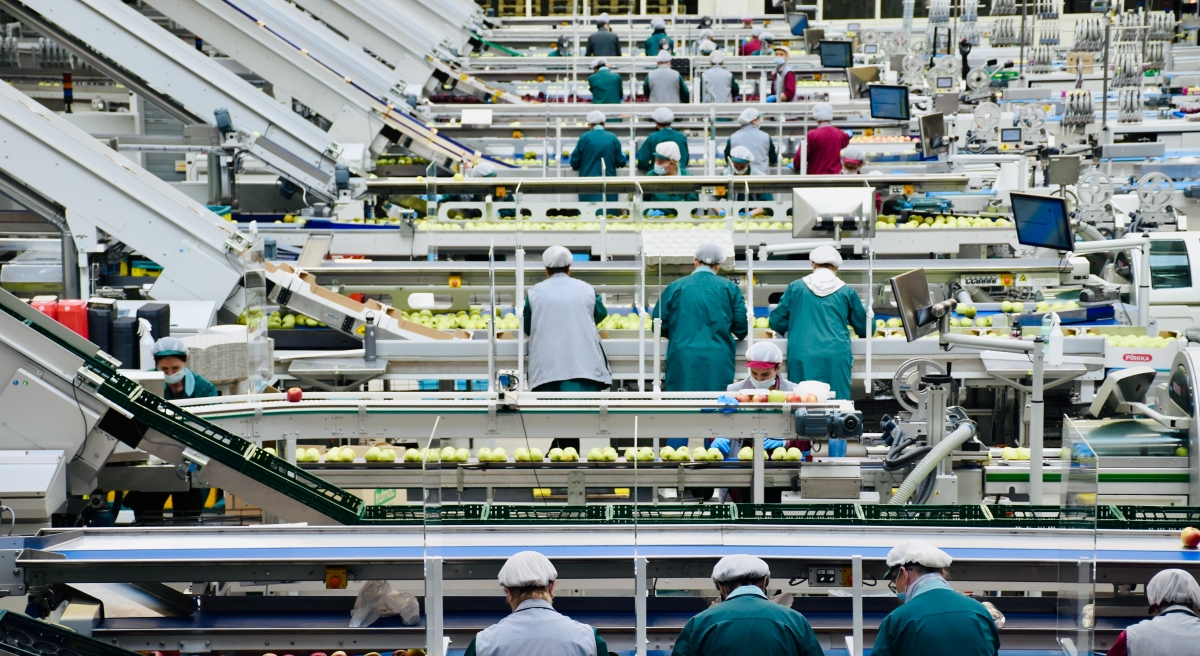
As the world enters the third year of the COVID-19 pandemic, disruptions in global supply chains do not seem to be easing, although the vaccination rate in many countries has substantially increased. While demand for traded goods rebounded strongly in 2021, the continuing disruptions on the transport or supply side requires a thorough rethink of trade-supporting strategies for the future.
World trade requires resilient supply chain strategies in the aftermath of the pandemic for what may come to be seen as the New Normal. Unprecedented factors both from the demand and supply sides of the chains have contributed to the current turbulence which disrupts world trade.
Supply chains in the New Normal need to possess an adaptive resilience capability. This system should be digitally embedded and technically supported and built on three distinct but interrelated capabilities of prediction, response, and recovery in relation to disruptions. Businesses can never eliminate 100 per cent of risks occurring in the supply chain. Therefore, instead of looking for solutions to completely prevent possible risks, businesses should invest in mapping risk scenarios and deal with these potential risks in an adaptive and resilient manner.
The capability to predict will require a business to anticipate what can go wrong; when, where and how it will happen, and why it might happen. This is essential for businesses as it enables them to foresee problems and their transmission mechanism that may affect normal operations, and then plan an effective and efficient response. To build up this capability, businesses need to map their supply chains and have total visibility of their suppliers and suppliers’ suppliers and their locations, their customers and customers’ customers and their locations, other logistics players involved, and how product and information flows are exchanged between these players.
Digitisation is a crucial step to resilience
The business’s capability for prediction, or foresight, would be greatly facilitated by the digitisation of business processes across the supply chain. Digital technologies play an essential role in supply chain management nowadays. A digital supply chain would enable players to share information in real, or near real time, and to collaborate and coordinate effectively via digital platforms. Through this, prospective risks can be detected early and proper preparation can be done accordingly through an ecosystem of partnerships.
Once prospective risks have been identified, businesses need to prepare and respond to potential disruptions which may be caused by these risks. This requires the analysis and assessment of risks to understand their likelihood and potential impacts, and then ranking their treatment priority. After this, risk treatment strategies – i.e. retention, transfer (such as via insurance), minimisation, and avoidance by stopping an operation or purchasing insurance contracts – can be devised and implemented accordingly.
In the context of global supply chain management, businesses have several options for risk minimisation. One of the traditional methods is to build up inventory and capacity buffers to increase operational flexibility. This, of course, requires additional resources that not all small and medium businesses can afford. Horizontal integration or collaboration between firms in the same line of business (e.g. manufacturers of the same products) may help to share the investment burden.
Businesses may consider a variety of other risk pooling (hedging) strategies with the aim of increasing diversification. This should be designed and implemented on multiple fronts, from procurement, through productions/operations and transport, to last-mile delivery.
On the procurement front, businesses should adopt a multi-sourcing strategy and avoid having a single source of supply. This is to prevent possible disruptions caused by socio-economic factors such as pandemics or hiccups in bilateral diplomatic relations (such as between Australia and China). For example, the current shortage of the AdBlue diesel additive in Australia may require a multi-pronged approach. This would include building domestic production capabilities for AdBlue; building the nation’s ability to provide hydrogen-fuelled vehicles as an alternative; and diversifying the international supply chain by importing from other countries and regions rather than China.
Diversifying the manufacturing or operations network is also required to guard businesses against unexpected disruptions from factors that may negatively affect the production or operations in a geographical area, such as natural disasters or labour strikes.
Through mapping their supply chain, businesses will be able to assess the criticalness of key components, upon which either an onshoring or near shoring strategy could be applied. There will be, of course, pros and cons when businesses change their procurement and production/operations from overseas to domestic or regional settings, and decisions should be made taking into account trade-off considerations.
Flexibility in supply chain operations should also be designed and implemented in the order management, transport and last-mile delivery aspects of a business, and multiple channels of orders and delivery with alternative transport arrangements and contracts should be in place. Again, digitisation can be the catalyst for change.
Regardless of the risk minimisation strategies, businesses must develop and maintain an up-to-date business continuity management plan. It is futile to ask whether a risk will occur or not. It is however important to know the process for responding in order to return as quickly as possible to normal business when something goes wrong.
In the aftermath of a disruption, businesses should also retain a record of the path to recovery. That is, after the incident happens and the business has implemented a series of response measures, the effectiveness of these measures should be assessed, lessons should be drawn, and supply chain configurations should be adjusted accordingly so that when a similar incident occurs in the future, a better recovery will be possible. This is known as closing the loop in the PDCA (Plan-Do-Check-Act) cycle.
Southeast Asia as a diversification option
Diversification to enhance system and capacity flexibility in all aspects of supply chain management is critical to effectively and efficiently managing disruptions. Many diversification strategies require the reconfiguration of supply chain networks and systems, and one of the considerations for the supply chain redesign is where sourcing and manufacturing/production/operations markets should be.
From the perspective of Australian businesses, Southeast Asian countries should be considered destinations for supply chain diversification. There are several strategic considerations for this.
Apart from China, these countries have been manufacturing/producing and exporting lots of household commodities, including food and whitegoods, as well as other inputs for the production and operations of many industries in Australia. In terms of shipping distance, there is a clear advantage for Australia as a faster response is associated with shorter shipping time in case of disruption.
Businesses in Australia can also take advantage of the benefits provided by several multilateral free trade agreements in the region such as the ASEAN-Australia-New Zealand Free Trade Area, the Comprehensive and Progressive Agreement for Trans-Pacific Partnership, and the Regional Comprehensive Economic Partnership in which many Southeast Asian countries are participating members. There are other more bilateral arrangements such as the Australia-Vietnam Enhanced Economic Engagement Strategy. Enhanced collaboration with regional business partners, empowered by preferential tariff schemes, will enable Australian businesses to favourably deploy diversification strategies such as multi-sourcing and near-shoring, both from supply chain time and cost perspectives.
Southeast Asian countries are perfectly positioned to be considered as the destinations for Australian businesses’ supply chain diversification. As the saying goes in several of these countries “water far off will not quench a fire near at hand”. So the inclusion of these neighbouring countries in the diversification portfolio of Australian businesses will help to enhance their supply chain resilience capability.
The way forward
Managing supply chain disruptions is not a one-off fix-it job, but more of a journey. Indeed, the latest quite different supply chain problems such as the baby formula milk shortage in the US, and the shortage of chicken in Singapore demonstrate that businesses will need to be well-versed in building up their resilience capability and employing supply chain enhancement strategies to support continued international trade.
And this should apply to all businesses, big or small. Sometimes, due to limited resources, small businesses may not put a lot of effort into risk management and some managers think that risks do not appear often. This is an unsustainable course of action. In the context of supply chains being so comprehensively interconnected today, an event happening thousands of kilometres away can affect all sorts of businesses if they don’t have a prepared plan of action.
Vinh Thai is Asia Society Australia Supply Chain Fellow and Associate Professor at the School of Accounting, Information Systems and Supply Chain, RMIT University.
Presented in partnership with the Global Victoria Trade Alliance Program.



